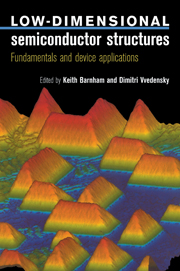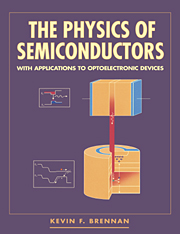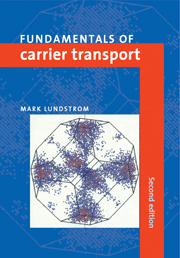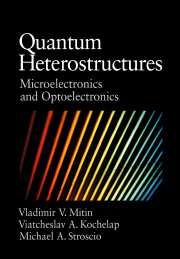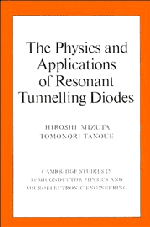Low-Dimensional Semiconductor Structures
Low-Dimensional Semiconductor Structures provides a seamless, atoms-to-devices introduction to the latest quantum heterostructures. It covers their fabrication, their electronic, optical and transport properties, their role in exploring physical phenomena, and their utilization in devices. The authors begin with a detailed description of the epitaxial growth of semiconductors. They then deal with the physical behaviour of electrons and phonons in low-dimensional structures. A discussion of localization effects and quantum transport phenomena is followed by coverage of the optical properties of quantum wells. They then go on to discuss non-linear optics in quantum heterostructures. The final chapters deal with semiconductor lasers, mesoscopic devices, and high-speed heterostructure devices. The book contains many exercises and comprehensive references. It is suitable as a textbook for graduate-level courses in electrical engineering and applied physics. It will also be of interest to engineers involved in the development of semiconductor devices.
- Describes all the key aspects of semiconductor heterostructures - fabrication, properties, and device applications
- Uses a clear 'atoms-to-devices' approach
- Contains a wealth of exercises and references
Product details
August 2001Hardback
9780521591034
408 pages
256 × 181 × 28 mm
1.036kg
275 b/w illus. 78 exercises
Available
Table of Contents
- 1. Epitaxial growth of semiconductors D. Vvedensky
- 2. Electrons in quantum semiconductor structures: an introduction E. Johnson
- 3. Electrons in quantum semiconductor structures: more advanced systems and methods E. Johnson
- 4. Phonons in low-dimensional semiconductor structures M. Blencowe
- 5. Localization and transport A. MacKinnon
- 6. Electronic states and optical properties of quantum wells J. Nelson
- 7. Nonlinear optics in low-dimensional semiconductors C. Phillips
- 8. Semiconductor lasers A. Khan, P. Stavridou, and G. Parry
- 9. Mesoscopic devices T. Thornton
- 10. High speed heterostructure devices J. Harris.

